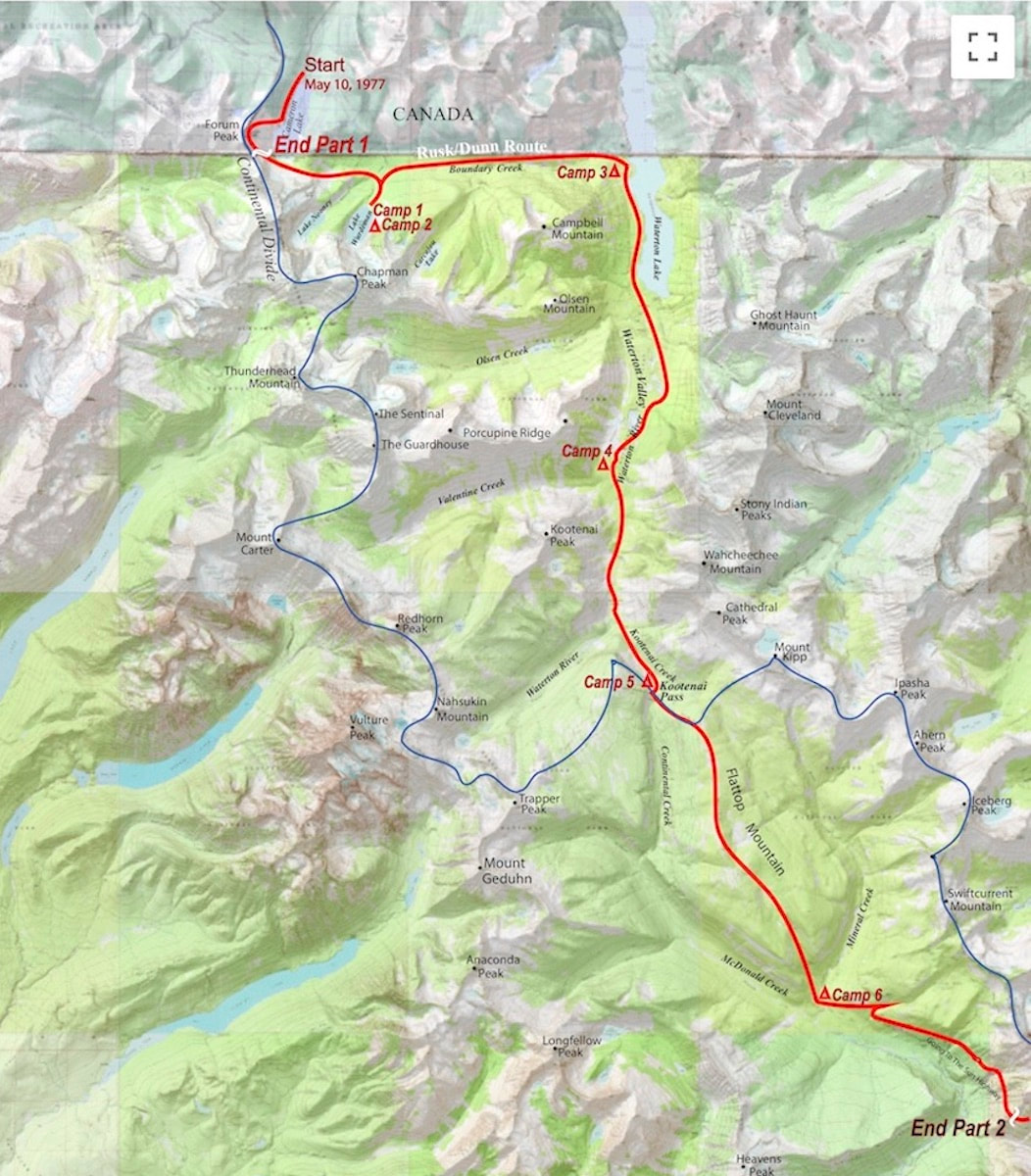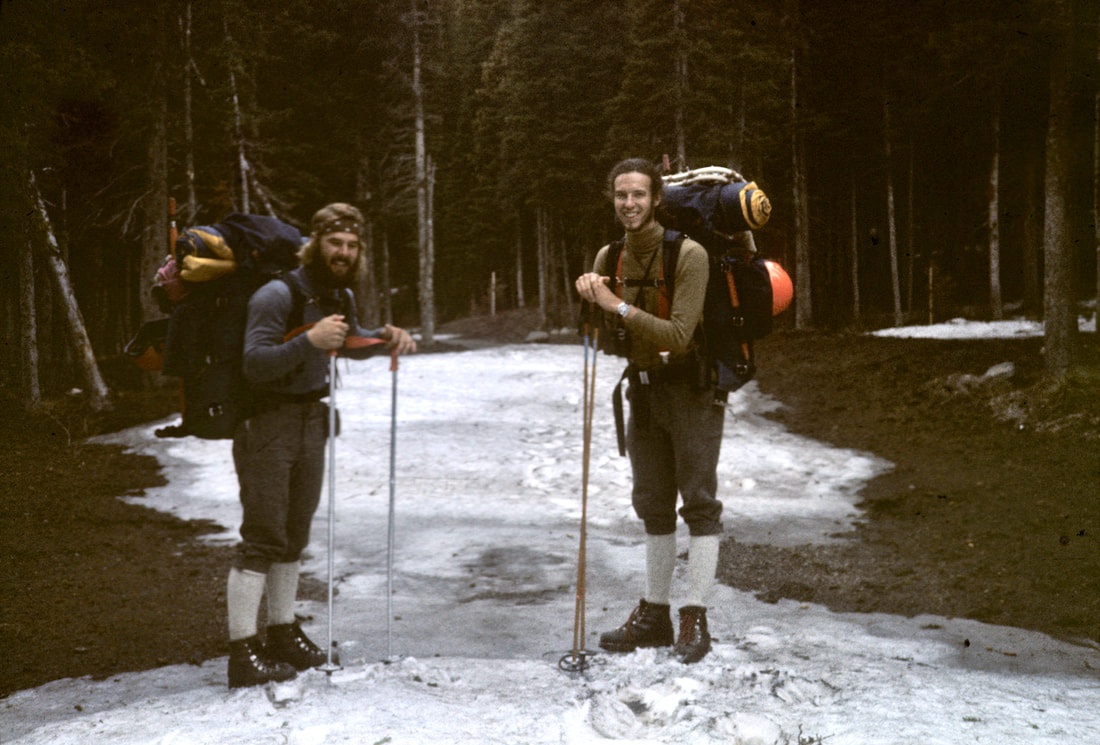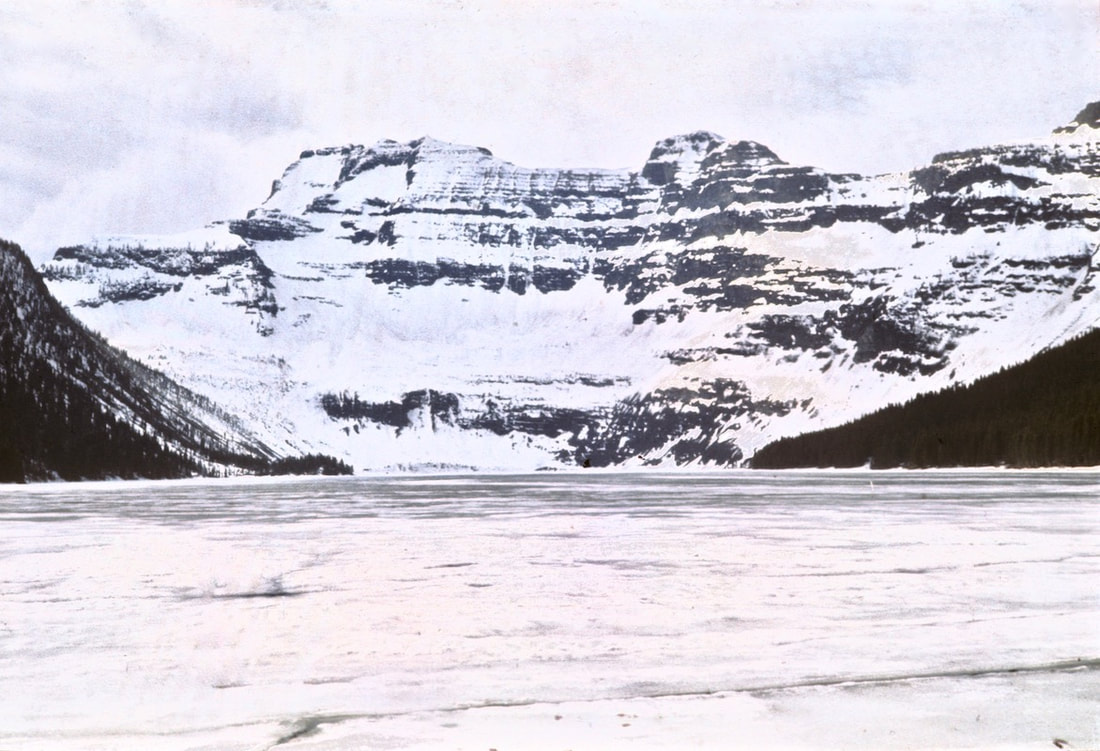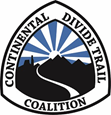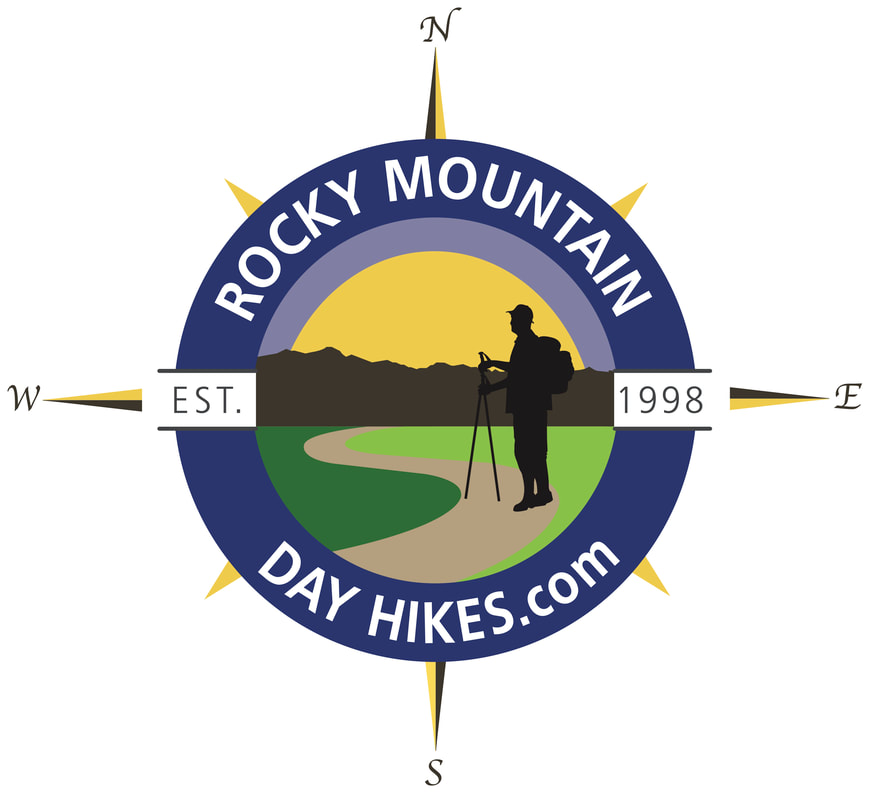The Continental
|
|
Introduction In 1977, I walked a route along the Continental Divide from Canada to Mexico; a trek that lasted nearly 9 months. My good friend, Craig Dunn, hiked with me as far as the Red Desert in southern Wyoming where his right knee ended the trip for him. This was long before the advent of cell phones, GPS and an established Continental Divide Trail system. We used U.S. Geological Survey paper maps and communicated with the people who were following us via mailbox and pay phone whenever we came into a town to resupply. It should also be noted that I am attempting to recount this story some 40 years after the fact, without the benefit of an exacting memory. Because of this deficit, the details of my story are filled-in using imaginative memory, meaning, I’ve imagined the details as they probably would have occurred. This is an account of that adventure. May 10, 1977 Waterton Lakes National Park, Canada Brian’s Jeep jumped and jolted its way down the muddy track with reckless abandon. The sky was cold and dreary, burdened with moisture-laden clouds spitting a rainy sleet. There was no talk, only Brian’s incessant smirk, which he didn’t even try to hide as he relished the moment. The time had finally come to shut-up and put-up and as far as the ‘shut-up’ part was concerned, naked reality had turned Craig and I into a couple of salt stones. I hung onto the overhead grab by the window as Brian’s maniacal driving plunged us further into the forest until the muddy ruts had turned to slush, coming to an abrupt end at a locked gate. This was the end of the road for Brian but for Craig and me this was the dumping off point. Mile one. Brian hopped out of the truck with unnecessary enthusiasm crowing “This is it ladies… chop chop!” He swung open the back gate of the jeep and hauled out our packs, dropping them in the mud splattered-slush. I stared out the front windshield, willing myself to move. At least the sleet had stopped. Craig stood by the truck, hands in his pockets, surveying the sea of clouds shrouding what little there was to see of the immediate peaks to the south. I stepped out of the vehicle and looked down at my boots, a brand new pair of Galibier Peuterey mountaineering boots designed for “…extreme hiking and climbing”. I wasn’t worried about the boots, they were top of the line, I was worried about the feet in them. I glanced up at the dismal skies then walked slowly around the truck to where Brian was standing by our packs with that damned Cheshire grin on his face. “Need help with your corset?” he sarcastically asked, pointing at my pack.
The packs were monstrous, maybe 90 pounds, bulging with 16 days’ worth of food, fuel, winter gear, climbing equipment, snowshoes, repair kit, 1st aid supplies, cook gear, tent, sleeping bags, pads and miscellaneous crap. It was like trying to throw a dead gorilla on your back. “Let me get a picture here so they’ll have something to identify the bodies with later” Brian quipped. He took a picture of us looking heroic at the trailhead then walked up and shook our hands saying “Good luck ladies!” And with that he hopped back in the jeep and was gone. The clouds sagged deeper into the valley reflecting my mood.
webbing and a neoprene strap/binding, an early step away from wooden snowshoes and a precursor to the modern-day shoe. It never occurred to me that they might fail, but it sure as heck ought to have; they were “prototypes” for chrissake. We plodded on along the Cameron Lake trail for several hours before breaking out of the forest onto the huge and exposed east slope of Forum Peak. The open mountainside was steep and an obvious avalanche zone but it was spring and the snowpack had mostly settled and we really didn’t have much choice but to cross it. We picked a line that both traversed the mountain while climbing steeply to attain higher ground out of the trigger zone. However, as we climbed and traversed I could see that we were coming in too low to avoid crossing under a small cirque with a giant cornice hanging overhead.
cornice, we quickly agreed that risking our lives was worth saving the 45 minutes and proceed across the slope. Ten minutes later and only a few yards from safety there was a thundering boom. I swung around and watched in disbelief as the cornice exploded into the cirque and then burst over the rock wall directly above us in a fantastic and terrifying tsunami of ice and snow. My instinct was to turn and run faster than a speeding bullet but I had “bear paws” on my feet and a dead gorilla on my back; I was about as mobile as a turtle in concrete. Still, I lurched forward in the illusion of fleeing as the avalanche crashed into the slope above, roaring down on us with terrifying ferocity. I fell to my knees and screamed out “NOOOOooo” as the wind blast hit and the avalanche passed no more than 10 or 12 strides behind us. Moments later it crashed with another thunderous explosion into Camron Lake, some 1,600 feet below, creating another tsunami of water and ice that traveled across the half frozen lake to slam into the forest on the far bank. Our tracks across the slope had been obliterated. 30 seconds slower and we would have been buried at the bottom of that lake. 30 seconds. 12 strides. It isn’t even worth trying to calculate the number of ways we could have lost 30 seconds and ended up in that avalanche. I staggered up out of the snow and nearly fell over. Craig just sat there, staring down at the lake but there was no time to consider the “what ifs”, the weather was deteriorating into a wind-driven, rain/snow mix and we still had three more, difficult miles before making camp. As we regrouped, all I could think was ‘Really?? Seven hours into the trip and we’re almost dead?’ We weren’t even out of Canada yet, for crying out loud.
0 Comments
Leave a Reply. |
Kip RuskIn 1977, Kip Rusk walked a route along the Continental Divide from Canada to Mexico. His nine month journey is one of the first, documented traverses of the US Continental Divide. Montana Part 1 - Glacier Ntl Pk Part 2 - May 11 Part 3 - May 15 Part 4 - May 19 Part 5 - May 21 Part 6 - May 24 Part 7 - May 26 Part 8 - June 2 Part 9 - June 5 Part 10 - June 7 Part 11 - June 8 Part 12 - June 11 Part 13 - June 12 Part 14 - June 15 Part 15 - June 19 Part 16 - June 23 Part 17 - June 25 Part 18 - June 27 Part 19 - June 30 Part 20 - July 5-6 Part 21 - July 7-8 Part 22 - July 9-10 Part 23 - July 11-15 Part 24 - July 17-18 Part 25 - July 18-19 Part 26 - July 19 Part 27 - July 20-21 Part 28 - July 22-23 Part 29 - July 24-26 Part 30 - July 26-30 Part 31 - July 31-Aug 1 Part 32 - Aug 1-4 Part 33 - Aug 4-6 Part 34 - Aug 6 Part 35 - Aug 7-9 Part 36 - Aug 9-10 Part 37 - Aug 10-13 Wyoming Part 38 - Aug 14 Part 39 - Aug 15-16 Part 40 - Aug 16-18 Part 41 - Aug 19-21 Part 42 - Aug 20-22 Part 43 - Aug 23-25 Part 44 - Aug 26-28 Part 45 - Aug 28-29 Part 46 - Aug 29-31 Part 47 - Sept 1-3 Part 48 - Sept 4-5 Part 49 - Sept 5-6 Part 50 - Sept 6-7 Part 51 - Sept 8-10 Part 52 - Sept 11-13 Part 53 - Sept 13-16 Part 54 - Sept 17-19 Part 55 --Sept 19-21 Part 56 Sept 21-23 Part 57 - Sept 23-25 Part 58 - Sept 26-26 Colorado Part 59 - Sept 26 Part 60 - Sept 30-Oct 3 Part 61 - Oct 3 Part 62 - Oct 4-6 Part 63 - Oct 6-7 Part 64 - Oct 8-10 Part 65 - Oct 10-12 Part 66 - Oct 11-13 Part 67 - Oct 13-15 Part 68 - Oct 15-19 Part 69 - Oct 21-23 Part 70 - Oct 23-28 Part 71 - Oct 27-Nov 3 Part 72 - Nov 3-5 Part 73 - Nov 6-8 Part 74 - Nov 9-17 Part 75 - Nov 19-20 Part 76 - Nov 21-26 Part 77 - Nov 26-30 Part 78 - Dec 1-3 New Mexico Part 79 - Dec 3-7 Part 80 - Dec 8-11 Part 81 - Dec 12-14 Part 82 - Dec 14-22 Part 83 - Dec 23-28 Part 84 - Dec 28-31 Part 85 - Dec 31-Jan2 Part 86 - Jan 2-6 Part 87 - Jan 6-12 Part 88 - Jan 12-13 Part 89 - Jan 13-16 Part 90 - Jan 16-17 Part 91 - Jan 17 End |
© Copyright 2025 Barefoot Publications, All Rights Reserved

